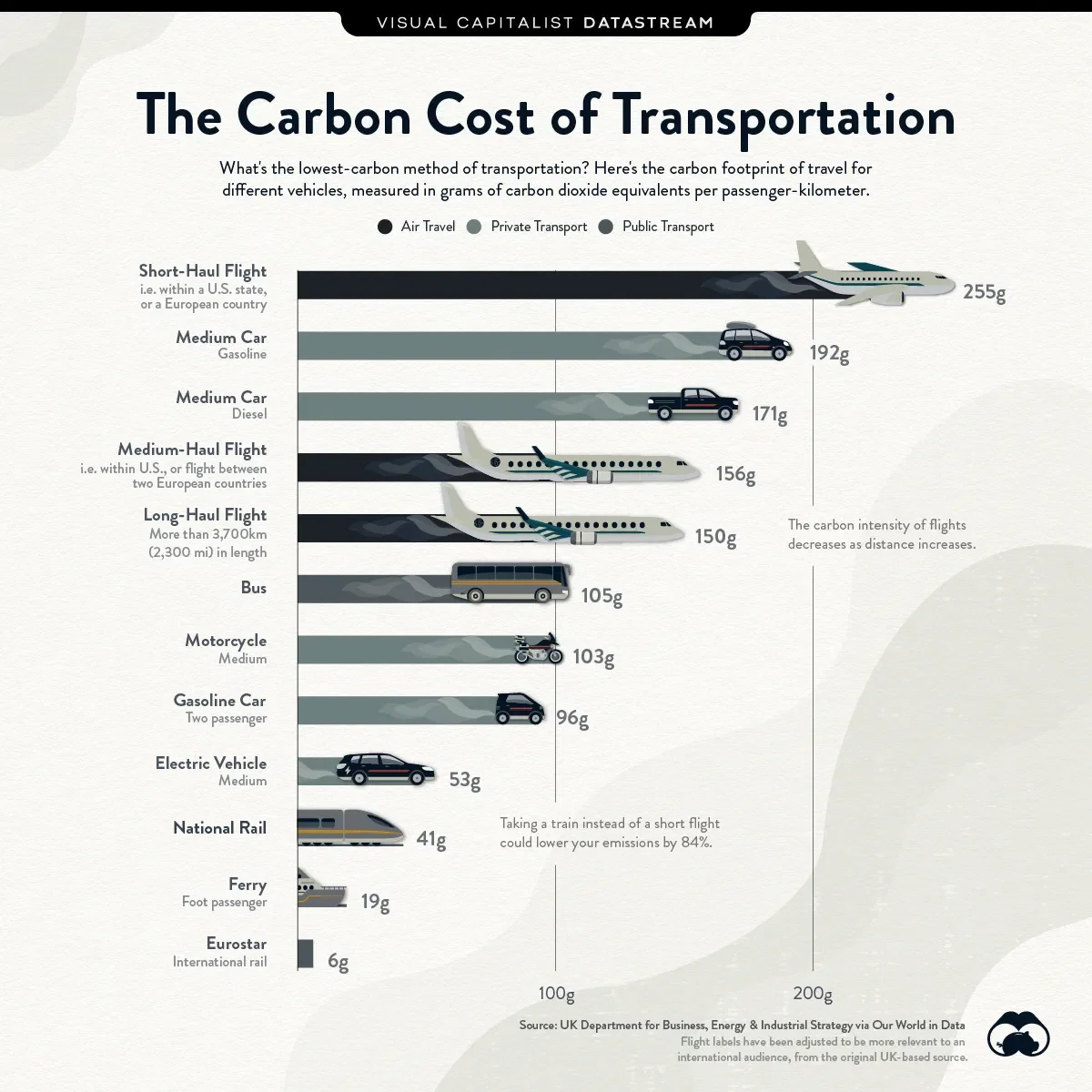Where Data Tells the Story
© Voronoi 2025. All rights reserved.

As concern about climate change has grown, individuals are becoming increasingly conscious of their impact on the environment. Transportation emissions often make up the largest portion of our individual carbon footprints. For that reason, evaluating transport options is a natural place to start, whether it is for a daily commute or a leisure trip abroad.
So, what’s the most eco-friendly way to go from one place to another?
The above infographic charts the carbon footprint of transportation per passenger-kilometer for different vehicles based on data from the UK Government’s methodology paper for greenhouse gas reporting.
The carbon footprint of transportation is measured in grams of carbon dioxide (CO2) equivalents emitted per person to travel one kilometer. This includes both carbon dioxide and other greenhouse gases.
Flying on a short flight or driving alone are the most carbon-intensive travel methods. However, adding one more passenger to your car ends up cutting the emissions in half, making driving more efficient. Specifically, it’s worth breaking down categories of flights more, as their emissions depend greatly on their route length:
Why are longer flights far more eco-friendly than short-range flights? It’s because take-off uses much more energy than the ‘cruise’ phase of a flight. For short flights, the efficient cruise phase is relatively short-lived.
See the full article on visualcapitalist.com